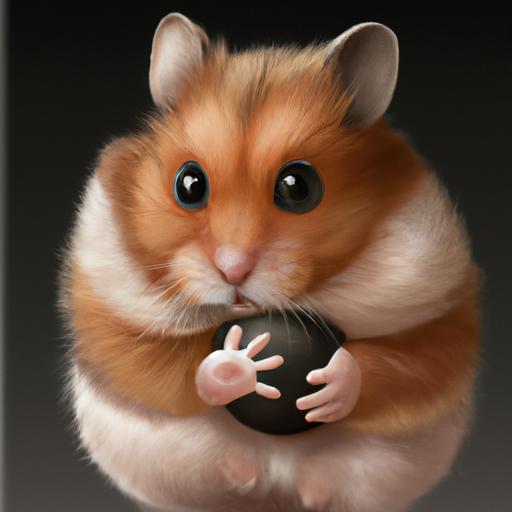Are you fascinated by the thought of owning your very own hamster? Have you ever wondered where hamsters come from and how they became domesticated? If so, youre in for a treat! This article will explore the fascinating history of hamster domestication, from the first wild hamsters captured to the many types of domesticated hamsters now kept as pets.
Well also look at how to capture and care for these lovable creatures, as well as the many benefits of owning a hamster.
Read on to learn the amazing story of hamster domestication!.
Table of Contents
Short Answer
Hamsters were first domesticated in Syria around 1930 from the species known as the golden hamster.
They were bred as laboratory animals but eventually escaped into the wild and were later caught and domesticated for pet ownership.
Now, hamsters are kept as popular pets in many parts of the world, often kept in cages and fed various foods.
The History of Hamster Domestication
Hamsters have been around since the late 1800s, but it wasn’t until the 1930s that they were domesticated.
This was due to the work of zoologist Israel Aharoni, who captured wild hamsters and bred them in captivity.
This marked the beginning of the domestication of the hamster, and from then on, the popularity of these small rodents has grown exponentially.
Today, hamsters are one of the most popular small pets, found all over the world in a variety of breeds, colors, and personalities.
But how did it all begin? It starts with Aharoni and his work in Syria.
Aharoni was a zoologist who was fascinated by the behavior of wild hamsters.
He observed them in their natural habitat and noticed their intelligence, inquisitiveness, and social behavior.
He was excited to see that they could be tamed, and thought they had great potential as domesticated animals.
He set out to capture some of the wild hamsters and bring them back to his laboratory in Syria, where he could begin the process of domestication.
He bred these hamsters in captivity and, over time, they became accustomed to humans and their environment.
He was successful in creating the first domesticated hamsters, and soon, these animals spread throughout the world, becoming popular pets.
Today, there are a variety of breeds of hamsters, from the popular Syrian hamster to the rare Chinese hamster.
They come in a wide range of colors, and each has its own unique personality.
Thanks to Aharoni’s work, we now have these wonderful little animals in our homes and hearts.
Capturing Wild Hamsters

Capturing wild hamsters was no easy task, as they are small, fast, and can easily hide in their burrows.
To capture them, zoologist Israel Aharoni devised a clever technique: he placed a long cardboard tube in their burrow and used a net to capture the hamster when it emerged from the tube.
Aharoni then placed the captured hamsters in cages and bred them in captivity.
To ensure that the hamsters remained healthy, he provided them with a diet of fruits, vegetables, and grains, as well as plenty of fresh water.
By breeding hamsters in captivity, Aharoni was able to create the first domesticated hamsters.
These hamsters were then sold to pet stores, which contributed to their growing popularity.
Today, domesticated hamsters are found all over the world, with a variety of breeds, colors, and personalities.
Breeding the First Domesticated Hamsters
When it comes to the origins of domesticated hamsters, much of the credit goes to Israeli zoologist Israel Aharoni.
In the 1930s, Aharoni set out on a mission to capture and breed wild hamsters.
He was able to do this by setting up traps in their natural Syrian habitat and then carefully breeding the captured hamsters in captivity.
It took years of hard work, but Aharoni was eventually able to create the first domesticated hamsters.
These hamsters were then sold to pet stores and quickly became popular.
As their popularity grew, so did their availability.
Today, domesticated hamsters are found all over the world in a variety of breeds, colors, and personalities.
Domestication of hamsters is an ongoing process.
New breeds are still being developed today to meet the demands of pet owners.
For example, some breeds have been developed to be more docile, while others have been bred to have more exotic colors and patterns.
This ongoing process of domestication has allowed hamsters to become one of the most popular small pets available.
Hamsters are an ideal pet for those who are looking for an animal companion with minimal upkeep.
They are low-maintenance, require minimal space, and can easily be handled.
With the right care and attention, hamsters can make wonderful and loyal pets.
Popularity of Domesticated Hamsters

The popularity of domesticated hamsters has grown exponentially since they were first captured and bred in captivity by zoologist Israel Aharoni in Syria during the 1930s.
Hamsters are among the most popular small pets available in pet stores all over the world, with a variety of breeds, colors, and personalities.
The pet industry has benefited greatly from the popularity of these furry little critters, as they are relatively easy to care for and require minimal space, making them an ideal choice for many households.
Hamsters have an incredibly adorable and endearing appearance, which has helped to contribute to their popularity.
They also have a wide range of personalities, from outgoing and active to shy and timid.
Their small size, combined with their endearing personalities, makes them a great choice for children and adults alike.
The availability of different breeds of hamsters has also contributed to their popularity.
From the common Syrian hamster, to the more exotic breeds such as the Winter White or the Roborovski, there is a breed of hamster to suit any taste.
Domesticated hamsters have also been bred to come in a variety of colors, from the more traditional browns and grays, to more exotic colors such as white and black.
The popularity of domesticated hamsters has been further enhanced by the availability of a wide range of accessories and toys.
From running wheels to tunnels, there is something to keep even the most active of hamster occupied.
There are also a variety of treats and foods available, as well as a range of cages and habitats designed to suit any budget.
The popularity of domesticated hamsters is a testament to the success of their domestication.
From their beginnings as wild animals, to their current role as beloved family pets, hamsters have truly come a long way.
With their endearing personalities, wide range of breeds, and availability of accessories and toys, it is no wonder that hamsters have become one of the most popular small pets around.
Types of Domesticated Hamsters
When it comes to domesticated hamsters, there is a wide variety of breeds, colors, and personalities available to choose from.
The type of hamster you decide to bring home will depend on your lifestyle and preferences.
Syrian hamsters, also known as golden hamsters, are the original and most common type of domesticated hamster.
These hamsters are usually about 6 inches long, have thick, soft fur, and come in a variety of colors and patterns.
They are solitary animals, meaning they do not like to share their space with another hamster, so they should not be kept in pairs.
The other type of popular domesticated hamster is the dwarf hamster.
These tiny hamsters come in two breeds: Russian dwarf and Chinese dwarf.
They are much smaller than Syrians, usually only around 3 inches long, and have shorter fur.
Unlike Syrian hamsters, dwarf hamsters are social animals and do best when kept in pairs or small groups.
In addition to these two main types of hamsters, there are also hybrid breeds that have been created by crossbreeding Syrian and dwarf hamsters.
These hybrids, such as the Robo dwarf hamster, tend to be larger than dwarf hamsters but smaller than Syrians, and they have a combination of the two breeds characteristics.
No matter what type of hamster you choose, they all make excellent pets and can be trained to do tricks, play with toys, and even take walks on a leash.
With their unique personalities and adorable faces, its easy to see why hamsters have become one of the most popular small pets in the world.
Caring for Domesticated Hamsters

Caring for domesticated hamsters can be a rewarding experience, but it is important to understand the basics of hamster care before bringing one home.
Hamsters are naturally shy and nocturnal, so providing a secure, warm, and quiet environment is essential for their wellbeing.
They also need plenty of space to explore, plenty of hiding places, and an exercise wheel to keep them active.
When it comes to food, hamsters need a balanced diet of fresh fruits, vegetables, and pellets designed specifically for hamsters.
It is important to avoid giving them human food, as it can be unhealthy for them.
Treats should only be given in moderation.
Hamsters also need access to fresh water at all times.
Domesticated hamsters also need regular grooming and handling to stay healthy and happy.
Their nails and teeth should be kept trimmed, and they should be brushed regularly to help prevent hairballs.
When handling them, it is important to be gentle and patient, and offer treats to encourage them to explore and trust their owners.
Finally, it is important to provide plenty of enrichment activities for domesticated hamsters.
Hamsters are intelligent animals, and they need plenty of mental stimulation.
Offering them a variety of toys and activities to explore can help keep them entertained and prevent boredom.
Caring for domesticated hamsters can be a rewarding experience, but it is important to understand the basics of hamster care before bringing one home.
With the right environment, plenty of space to explore, a balanced diet, regular grooming, and plenty of enrichment activities, hamsters can live happy, healthy lives.
The Benefits of Having a Hamster
Domesticated hamsters offer many benefits to their owners.
For starters, they are small, low-maintenance pets that require minimal care and space.
They are also relatively inexpensive to feed, making them an excellent choice for those who want a pet on a budget.
Hamsters are also incredibly active, making them lots of fun to watch and interact with.
They will often run on their exercise wheels, explore their habitats, and climb on their toys.
They are also highly social animals that love to be handled and played with.
Moreover, hamsters are very curious creatures, and they can provide hours of entertainment as they explore their environment.
They can be trained to come when called, do tricks, and learn to recognize their owners.
This can be a great way to bond with your pet.
Finally, hamsters are known for their easy-going, gentle personalities.
They tend to be more peaceful than other small animals, and they are generally very friendly and affectionate.
This makes them great companions for both children and adults alike.
In short, there are many great benefits to owning a domesticated hamster.
They are fun, low-maintenance pets that can provide hours of entertainment and companionship.
Plus, they come in a variety of breeds and colors, so there is sure to be one that’s just right for you!.
Final Thoughts
Hamsters have come a long way since they were first domesticated in Syria in the 1930s.
From their capture in the wild to their growing popularity in pet stores, hamsters have become one of the most beloved small pets around the world.
With a variety of breeds, colors, and personalities, there is a hamster to fit any lifestyle.
Caring for a hamster can be a rewarding experience, providing companionship and unconditional love.
If you’re looking for a pet that’s full of personality and fun, a hamster might just be the perfect fit for you.

